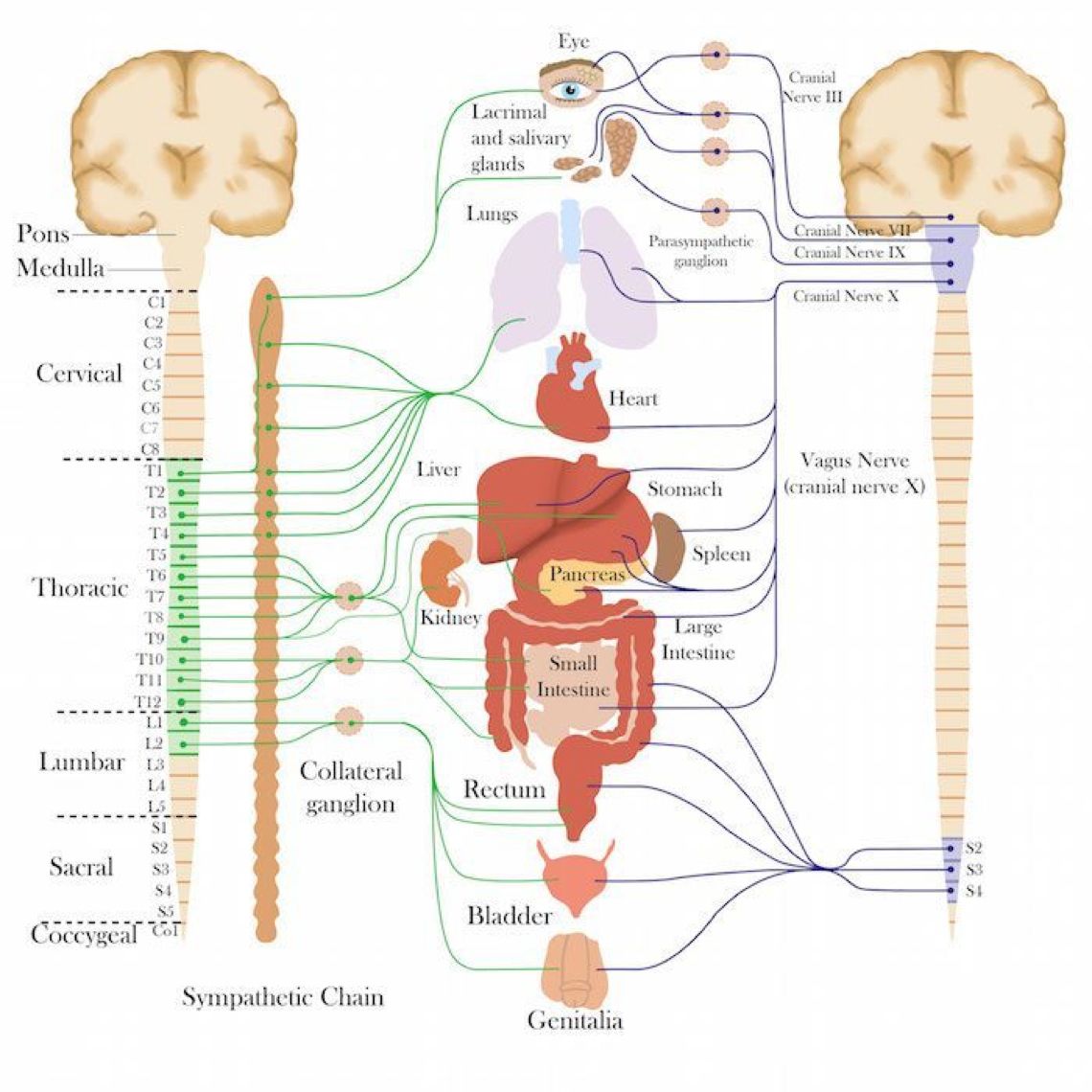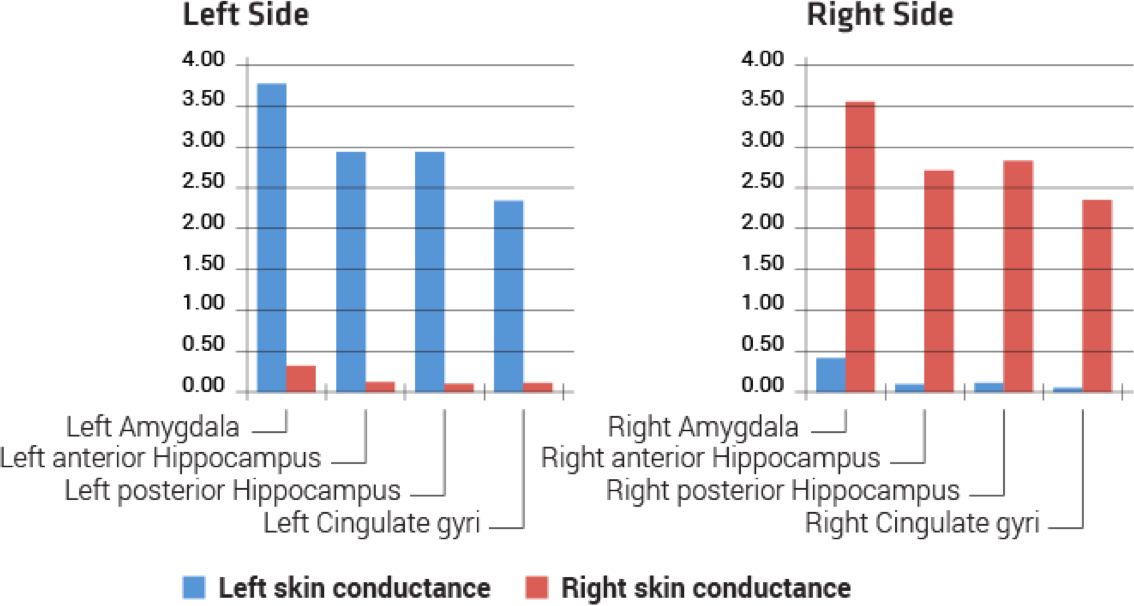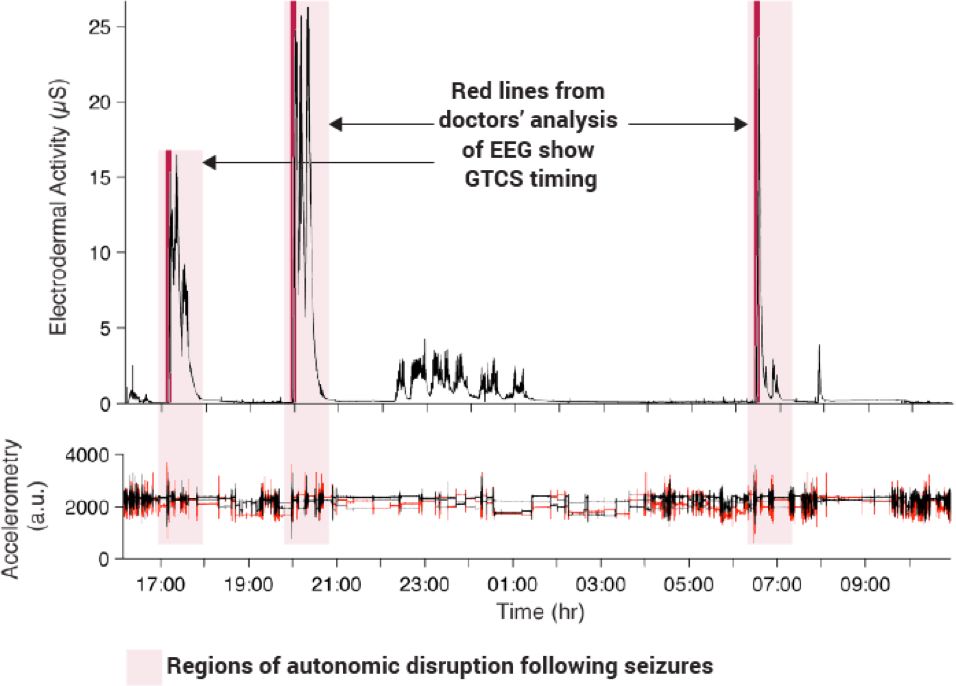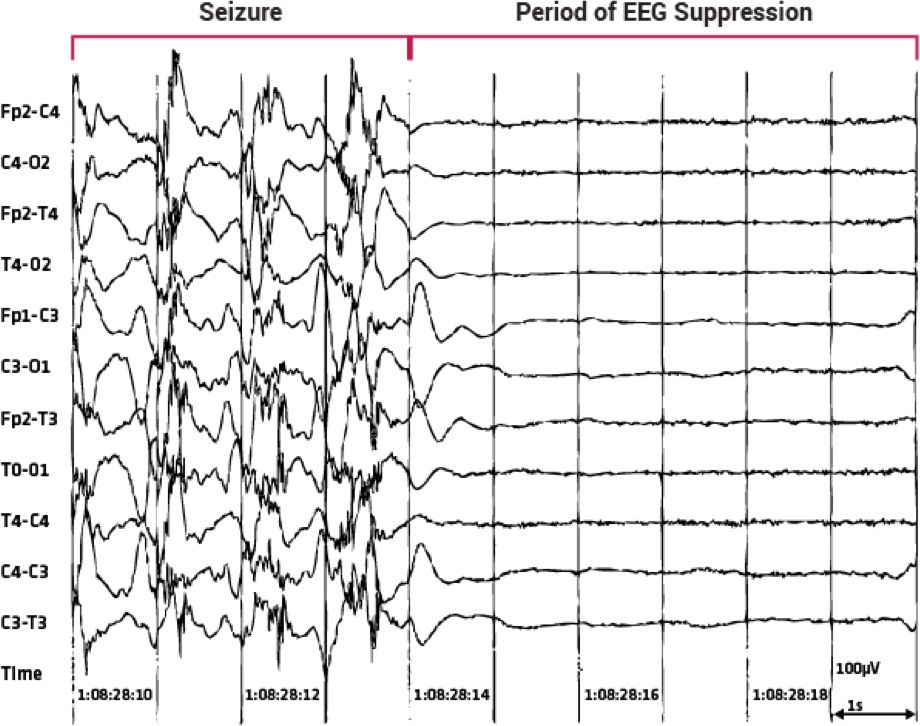Your Cart
Your cart is currently empty.
Go to Store| Item | Price (USD) |

Sympathetic activation (also Sympathetic arousal) increases when you experience excitement, or something important is happening or about to happen. It increases also with stressors - whether physical, emotional, or cognitive. In some medical conditions (e.g., epilepsy), it shows significant increases that are related to specific brain structures activation.
Parasympathetic activation occurs when your body needs to slow down and relax. It can be stimulated by the consumption of a hearty meal or deep breathing.
How do we measure sympathetic activation? The skin is the only organ that is purely innervated by the sympathetic nervous system (and not affected by parasympathetic activation). We can observe increases in sympathetic activation by monitoring subtle electrical changes across the surface of the skin.
Changes in heart rate (the time between the peak of each heart beat) occur as a result from both sympathetic and parasympathetic activation. Estimates of parasympathetic nervous system activation or vagal tone can be made by extracting the high frequency component of this heart rate variability.
Sleep disorders and insomnia
Addiction
Hypoglycemia
Affect dysregulation
Sensory Processing Modulation
Oppositional defiant disorder
Alzheimer's
Pain management
Autism spectrum disorders
Parkinson's disease
Anxiety disorder
Phobias (and desensitization)
Drug trials
Thyroid dysfunction
Endocrine disorders
Quadriplegia (or paraplegia)
Attention deficit hyperactivity disorder
Post-traumatic stress disorder
Depression
Anesthesia
Hot flashes
Psychiatric counseling
Bipolar disorder
Stroke
Dialysis
Cystic fibrosis
Temporary Paralysis
Epilepsy
Schizophrenia
Dementia
Alcoholism
Sexual Dysfunction
Dysthymia
Dermatology
Sociopathy
Diabetes

When the amygdala or hippocampus get activated, they elicit skin conductance on the same side of the body. .
Stimulating four brain regions on the left and four on the right (with depth electrodes) produces large skin conductance on the same side. (Mangina and Beuzeron-Mangina, 1996).
Also it is known that if a seizure strongly stimulates the amygdala, it could cause both large EDA and cessation of breathing. (Dlouhy et al. 2015).

EDA + motion is better than motion alone for automated Grand mal (Generalized Tonic Clonic) seizure detection (Poh et al., 2012a) .
Also, larger EDA correlates with longer post-ictal generalized EEG suppression (PGES) (Poh et al., 2012b) .
Starting from Poh's study, researchers at Empatica are constantly improving the algorithm for seizure classification. Their work leads to the following contributions: Regalia et al. 2015 and Onorati et al. 2016 .

PGES (Post-ictal generalized EEG suppression) appears as a "flat" EEG following the seizure.
PGES was found in 100% of the monitored cases of SUDEP (Ryvlin et al., 2013) . Thus, PGES is as an important biomarker for SUDEP.
The duration of PGES correlates with the size of the EDA measured on the wrist. Thus, EDA can be used both as an indirect biomarker for SUDEP and a measure of autonomic disruption.
Age is a significant determinant of the sympathetic and parasympathetic response following a Grand Mal Seizure; given the same PGES duration, paediatric patients demonstrate stronger sympathetic activation and higher vagal suppression. (Sarkis et al. 2015) .
Van Dooren et al. (2012) demonstrate correlations between EDA responses across a number of dermatomes. The work shows that despite the amplitude being lower on the vertical wrist, the EDA signal is still discernible and shows clear skin conductance responses with stimuli.
Poh et al. (2010) describe the relationship between traditional palmar wrist placement of EDA recording devices with dry electrodes measured during three conditions: physical activity, emotional stimuli, and high cognitive load.
Ambulatory EDA sensors using dry electrodes and placements on the wrist or ankle have been validated not only in the epilepsy/medical journals listed above, but also in a growing number of other areas. Here is an example showing reasonable EDA data collected on the ankle, with comparison to the wrist (Fedor et al., 2014) .
Picard et al. (2015b) described how a theory of multiple arousals explains asymmetric EDA findings.
Pieper and Laugero used features extracted from Q Sensor data for their publication on emotional eating in the journal Appetite (Pieper et al., 2013) .
AutoEmotive: Bringing Empathy to the Driving Experience to Manage Stress (Hernandez, Javier, et al., 2014) .
Sano et al. (2014) show, during sleep measurements, that measurement of EDA on the wrist typically gives greater responsivity than measurement on the traditional palmar surface.